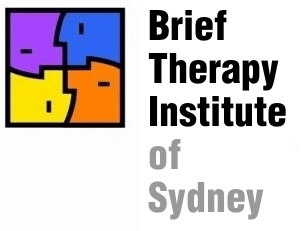Doonside Technology High School — developing a formal, school-wide Solution-Focused welfare and discipline policy.
Doonside Technology High School, in a highly disadvantaged area of Sydney's western suburbs, embarked on a multi-year project which resulted in their adopting a formal school-wide Solution-Focused welfare and discipline policy.
 This project was driven by then Deputy Principal Neil Worsley, who was keen to bring about "culture change" in the school, to change what he perceived as a negative "climate". The project began with Michael Durrant conducting an inservice seminar for school's Welfare Committee, followed by training for a larger group of school staff. Conversations about applications of Strengths-based and Solution-Focused ideas continued in a number of forums over the ensuing two years or so, leading to the launch of the official school Student Welfare policy.
This project was driven by then Deputy Principal Neil Worsley, who was keen to bring about "culture change" in the school, to change what he perceived as a negative "climate". The project began with Michael Durrant conducting an inservice seminar for school's Welfare Committee, followed by training for a larger group of school staff. Conversations about applications of Strengths-based and Solution-Focused ideas continued in a number of forums over the ensuing two years or so, leading to the launch of the official school Student Welfare policy.
The policy, as its name implies, was built around a focus on strengths and an expectation of change. (Logo and details reproduced with permission.)
Key aspects of the policy were:
- Six "Key Strengths" — all students are expected to grow and develop in relation to each of these Key Strengths over their period at the school. The Key Strengths were initially nominated by the school Welfare Committee; however, students were involved in creating "operational definitions" of the strengths. The Key Strengths became part of the language of the school community.
- Merit Awards given by teachers for changed or developing behaviour relating to one of the Key Strengths. It was clear that the awards were not for "good" behaviour, but for changing or developing behaviour.
- The school had a pre-existing "levels system" (in which students would move up or down levels, with greater or lesser rewards and consequences, according to evidence of good or poor behaviour); however, significant changes were that students would no longer lose points and drop down levels. All students began the year on Level 4 and could move UP levels, with varying degrees of reward and public recognition, by earning various numbers of merit awards.
- Students could be placed on levels 3, 2 or 1 (equivalent to detention, in-school suspension and out-of-school suspension) for clearly defined misbehaviour. When students were placed on one of these levels, the criteria for completing this level were clearly indicated. Importantly, when a student successfully completed the requirements of one of these levels, he/she did not have to "climb" back up the levels, but was immediately reinstated to the level she/he had been on before the loss of status.
- While a student was on detention, in-school suspension and out-of-school suspension, there was a Behaviour Program that he/she had to complete (in a printed booklet). This program was designed along Solution-Focused lines. It did not invite students to "reflect on" whatever misdeeds had led to their detention or suspension. Rather, it sought to engage students in reflection on their key strengths and a future-focused picture of how these strengths might be used to make things different following the detention or suspension.
How did this approach make a difference?

NOTE: The nature of high schools is that key staff members, particularly members of the leadership team, move on and are replaced by people with different ideas and different emphases. Thus, programs and policies change over time. The Solution-Focused Welfare Program at Doonside continued even after the Principal and both Deputy Principals, who had been in place at the time the program was implemented, moved on to other schools — testimony to the way the program had been embraced by the whole school community. Nonetheless, some years later, student welfare at Doonside may now reflect different approaches.
Strengths in Schools team — who we are, our backgrounds and experience
Professional development training for teachers
Consultation to schools who wish to implement Strengths- and Solution-Focused ideas in the school
Solution-Focused training for school counsellors, guidance officers and educational psychologists
International examples of Solution-Focused ideas applied in schools
References, links and resources

